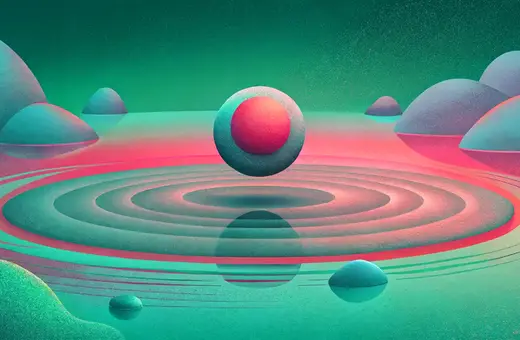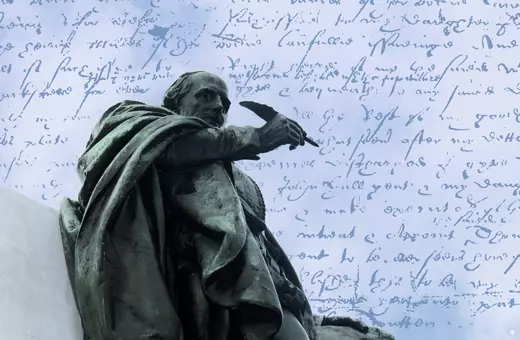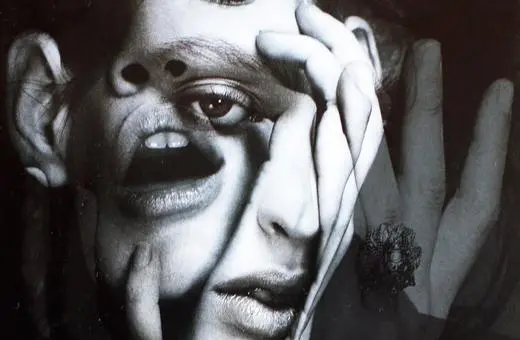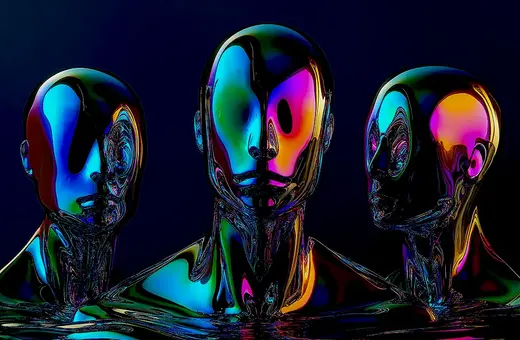Anime is philosophical in its very form. In this article, philosopher and novelist Mike Benett argues that anime’s distinctive visual style and narrative structure embody a phenomenological approach to experience, staging the instability of identity, memory, and the self. From Spirited Away to Neon Genesis Evangelion, viewers are drawn into shifting, subjective perspectives, inviting a mode of reflection more often found in philosophy than in popular culture, but far more in keeping with the modern age.
Anime has a strange new grasp on the world, not just in its surging global popularity, but in the surreal, stylized tropes that define its genres. From apocalyptic science fiction to quiet, introspective dramas, anime had often been dismissed in the West as a niche fandom. Yet beneath its surface lies a rich and sustained philosophical inquiry, one that directly engages with questions of identity, consciousness, memory, and selfhood. In its most ambitious works, anime doesn’t just reflect the world differently. As Christopher Bolton argues in Interpreting Anime (2018), it thinks differently.
___
The self is not a fixed point, but a shifting field of experiences shaped by longing, memory, and narrative
___
Through giant mechs, cyborgs, and fragmented timelines, anime stages deep metaphysical questions: What constitutes a person? Is there a stable self beneath the mask? Can technology alter what it means to be human? These are not accidental themes, but ones embedded in the history of Japanese thought and its engagement with Western philosophy, especially phenomenology, poststructuralism, and Buddhist-inflected notions of impermanence and relational identity.
The Cyborg Problem: Ghost in the Shell and Posthuman Identity
Mamoru Oshii’s Ghost in the Shell (1995) remains one of the most philosophically complex anime films ever made. Set in a near-future world dominated by cybernetic enhancement and AI consciousness, the film follows Major Motoko Kusanagi, a fully cybernetic government agent haunted by doubts about the authenticity of her own self. Is her “ghost”, her consciousness, truly hers, or merely the illusion of agency in a networked, programmable body?
The film invokes classic Cartesian dualism, René Descartes’ notion that mind and body are separate substances, with the mind as the seat of identity. But Oshii’s narrative dismantles that distinction. Kusanagi’s mind is hackable. Her memories can be altered. The boundary between human and machine collapses into what Donna Haraway famously called the cyborg, a hybrid figure that “blurs the boundaries between animal and machine, organism and technology” (A Cyborg Manifesto, 1985). In Ghost in the Shell, the self becomes a posthuman construction, fluid, dislocated, and embedded in systems larger than the individual.
 SUGGESTED READING
Spirited Away With Heidegger
By Edward McDougall
SUGGESTED READING
Spirited Away With Heidegger
By Edward McDougall
This philosophical instability is reinforced by the film’s style. Long, atmospheric sequences of urban landscapes and data flows emphasize mediation over narrative, echoing Jean Baudrillard’s idea of the simulacrum, a world where representations no longer refer to any underlying reality (Simulacra and Simulation, 1981). What Ghost in the Shell offers is not simply a science fiction story, but a meditation on the collapse of essential identity in a technologically saturated world.
Memory as Self: Millennium Actress and Phenomenological Time
Where Ghost in the Shell questions the body and its boundaries, Satoshi Kon’s Millennium Actress (2001) explores the self through the lens of memory, performance, and time. The film tells the story of Chiyoko Fujiwara, a reclusive former film star who revisits her life story in an interview. But as her memories unfold, they seamlessly merge with scenes from her movies, creating a shifting narrative in which past, present, fiction, and reality become indistinguishable.





















Join the conversation